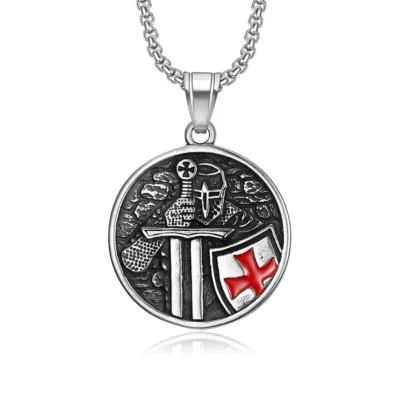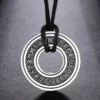
The Battle of Arsuf (1191): Richard I’s Decisive Victory Over Saladin
The Battle of Arsuf, fought on September 7, 1191, was a critical engagement during the Third Crusade, wherein Richard I of England—better known as Richard the Lionheart—secured a decisive victory against the formidable Muslim leader Saladin. This battle was significant not only for its military outcomes but also for the profound impact it had on the broader geopolitical landscape of the Holy Land during the Crusades. Richard’s victory at Arsuf demonstrated his military prowess and bolstered the morale of the Crusaders, reinforcing his reputation as a brilliant tactician and warrior.
This article will examine the events leading up to the Battle of Arsuf, the strategies employed by both Richard and Saladin, the course of the battle itself, and its aftermath. By understanding these elements, we can better appreciate the broader significance of this clash in the context of the Third Crusade.
Context of the Third Crusade
The Third Crusade (1189–1192) was launched in response to Saladin’s victory at the Battle of Hattin in 1187, where he annihilated the Crusader forces and subsequently recaptured Jerusalem, which had been under Christian control since 1099. The loss of Jerusalem—a city of immense religious significance to Christians, Muslims, and Jews—shocked the Christian world.
The Papacy, led by Pope Gregory VIII, issued a call for a new Crusade to reclaim the Holy City.
This call was answered by several of the most powerful monarchs of Europe, including King Richard I of England, King Philip II of France, and the Holy Roman Emperor Frederick I (Barbarossa). Although Frederick drowned en route, both Richard and Philip led significant forces to the Levant. Upon their arrival, they found the Crusader states in disarray and began their military campaigns with the siege of Acre.
Prelude to the Battle
After the successful capture of Acre in July 1191, tensions mounted between the Crusader leaders. King Philip II of France, exhausted and ill, soon departed for home, leaving Richard I in command of the Crusader forces. The objective of the Crusaders remained clear: retake Jerusalem from Saladin. However, before marching on Jerusalem, Richard sought to secure key coastal cities, which would ensure safe passage for reinforcements and supplies from Europe.
The coastal city of Jaffa was a strategic target, and Richard began the march southward from Acre along the coastline. Saladin, keenly aware of Richard’s tactical brilliance and the importance of Jaffa, shadowed the Crusader army, waiting for an opportune moment to strike.
Saladin’s forces harassed the Crusaders with hit-and-run attacks, trying to disrupt their advance, wear them down, and weaken their resolve before they could reach Jaffa.

The Crusaders marched in a tight, disciplined formation to minimise losses, with Richard maintaining strict control over his forces. The army’s cavalry rode on the inland side, while the infantry and archers defended the coastal flank. Saladin’s harassment tactics began to intensify as the Crusaders approached the densely wooded area near Arsuf, a location that would provide a favorable battlefield for the mobile and agile Muslim forces. Richard anticipated an attack and prepared his army for the inevitable confrontation.
Forces and Strategy
Richard I commanded a formidable Crusader army, consisting of approximately 12,000 men. His forces were composed of heavily armored knights, disciplined infantry, and renowned crossbowmen. The strength of the Crusaders lay in their heavy cavalry, whose devastating charges could break through enemy lines. However, Richard knew that the mobility of Saladin’s army posed a significant challenge.
Saladin’s forces were larger, numbering around 20,000 troops, including light cavalry (known as Mamluks), archers, and infantry. His army was adept at guerrilla tactics, employing swift hit-and-run attacks and using their speed to avoid the heavily armored Crusader cavalry. Saladin’s plan was to wear down the Crusaders with constant harassment and break their formation by forcing them to pursue his faster-moving troops. If Richard’s forces lost cohesion, they would be vulnerable to a larger assault.
The stage was set for a decisive engagement at Arsuf, a place where Richard’s disciplined leadership would be tested against Saladin’s tactical finesse.
The Course of the Battle
On the morning of September 7, 1191, Saladin launched a fierce assault on the Crusaders as they neared Arsuf. His army struck the rear and flanks of the Crusader column with a barrage of arrows, seeking to break the Crusader lines. Richard, well aware of Saladin’s tactics, had instructed his men to hold their positions and maintain formation, despite the incessant attacks. He knew that a premature charge could spell disaster for his forces.

For hours, the Crusaders endured relentless skirmishes, their shields bristling with arrows. Saladin’s forces darted in and out, attempting to provoke Richard’s cavalry into a reckless charge. The Crusader army, however, held firm under Richard’s strict command.
The turning point came when Richard ordered a carefully timed counterattack. He allowed his cavalry to charge at the moment when Saladin’s forces were overextended and vulnerable.
Richard’s knights, led by the Hospitallers, exploded out of the formation, driving into the heart of Saladin’s army. The shock of the Crusader cavalry charge was devastating. The heavily armored knights, with their lances lowered, broke through the Muslim lines, cutting down Saladin’s troops and forcing them to retreat. The swift and disciplined response of the Crusaders caught Saladin’s forces off guard, and they were unable to regroup effectively.
Seeing his opportunity, Richard unleashed his full force, with both cavalry and infantry pressing the advantage. Saladin’s army, unable to withstand the ferocity of the Crusader charge, began to fall back. By late afternoon, the battle had turned decisively in Richard’s favour. Saladin’s forces retreated in disarray, and the Crusaders emerged victorious.
Aftermath and Consequences
The Battle of Arsuf was a significant psychological and military victory for Richard and the Crusaders. The battle demonstrated Richard’s ability to lead and manage his forces under extreme pressure. His disciplined handling of the Crusader army, resisting the temptation to charge prematurely, ensured that the Crusaders could exploit Saladin’s moment of weakness to devastating effect.
Though Saladin’s forces were not annihilated, their defeat at Arsuf was a serious blow to their morale and prestige. Saladin had proven himself a formidable commander in previous battles, but at Arsuf, he was outmaneuvered by Richard’s tactical acumen.
The battle solidified Richard’s reputation as one of the greatest military leaders of his age and secured his control over the coastal region.
Following the victory at Arsuf, Richard advanced to Jaffa, securing the city without significant resistance. With Jaffa in Crusader hands, Richard was in a strong position to continue his campaign toward Jerusalem. However, despite his success on the battlefield, the larger goal of the Crusade—the recapture of Jerusalem—remained elusive.

While Richard had proven his military brilliance, he lacked the logistical and political support necessary to mount a successful siege of Jerusalem. The Crusaders were not numerous enough to besiege the city effectively and Richard knew that even if he captured it, holding Jerusalem in the long term would be difficult without a sustained supply line and reinforcements from Europe.
Legacy of the Battle
The Battle of Arsuf remains one of the most famous battles of the Third Crusade, highlighting the tactical genius of Richard the Lionheart. The victory boosted the morale of the Crusaders and struck a blow to Saladin’s reputation as an undefeated commander. Although Richard’s ultimate goal of recapturing Jerusalem was never realised, the battle showcased the skill and determination of the Crusader forces and reinforced the importance of discipline and leadership in medieval warfare.
In the broader context of the Crusades, the Battle of Arsuf symbolized the ongoing struggle between Christian and Muslim powers for control of the Holy Land. Richard’s victory, while significant, was ultimately a tactical success in a much longer and more complex conflict. The Third Crusade would end in 1192 with a truce between Richard and Saladin, which allowed Christian pilgrims access to Jerusalem but left the city under Muslim control.
The enduring legacy of Arsuf lies in the demonstration of Richard I’s military acumen and the resilience of the Crusader forces in the face of adversity. It was a battle that showcased the fine balance between patience and aggression, a lesson that would resonate throughout the annals of medieval warfare.
Final Reflections on the Battle of Arsuf
The Battle of Arsuf in 1191 stands as a key moment in the Third Crusade, where the forces of Christendom, led by Richard the Lionheart, achieved a hard-fought victory over Saladin’s army. The clash of these two legendary figures on the battlefield marked not just a military engagement but a confrontation of cultures, religions, and empires. While the larger objectives of the Crusades remained unfulfilled, the battle itself demonstrated the power of strategic leadership and military discipline, securing Richard’s place in history as a brilliant commander and cementing Arsuf’s place in the narrative of the Crusades.
Customer Favourites
-
Templar Guardian T-Shirt- Knights Templar Edition
Price range: £19.10 through £35.86 -
Templar Knight Crusader Stickers
Price range: £7.32 through £10.52








